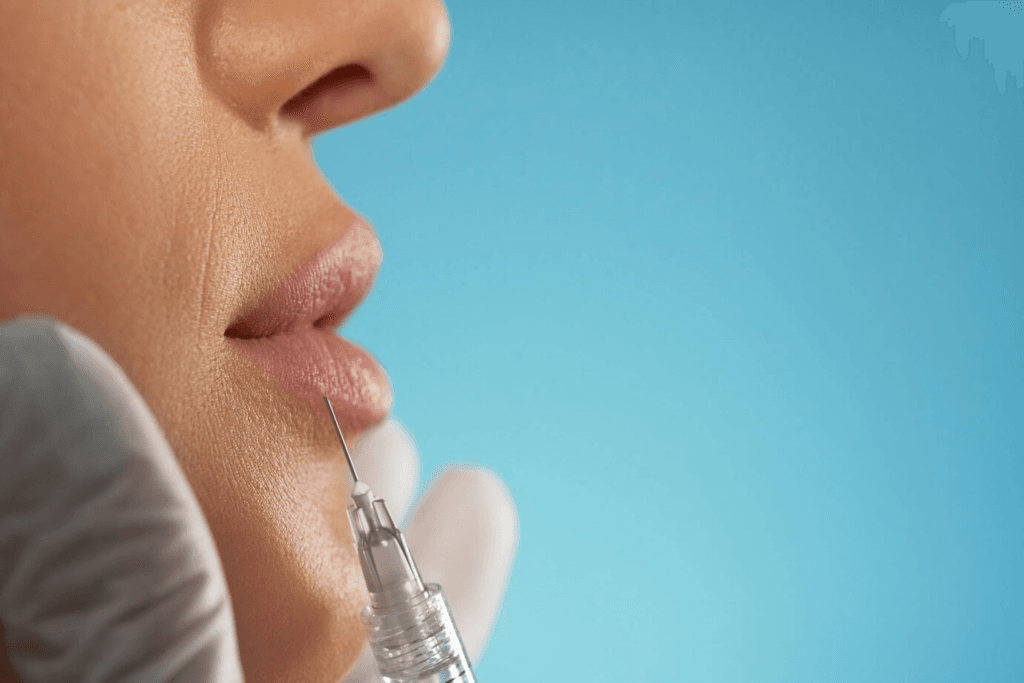Hyaluronic acid (HA) fillers have become increasingly popular for subtly enhancing facial features and restoring lost volume. However, the question of how often one should receive these treatments remains a common concern. Understanding the longevity of HA fillers and the factors influencing their duration is crucial for making informed decisions about your aesthetic goals and treatment plan. This article will delve into these aspects, providing guidance on optimizing your results and maintaining a youthful appearance.

Understanding Hyaluronic Acid Fillers
Hyaluronic acid is a naturally occurring substance in the body, responsible for hydration and skin elasticity. HA fillers are injectable gels composed of synthetic HA, designed to plump the skin, smooth wrinkles, and enhance facial contours. They are considered a relatively safe and effective treatment option with minimal downtime. Different HA fillers have varying viscosities and formulations, leading to different longevity and suitability for various treatment areas.
The body naturally metabolizes HA, meaning it is gradually broken down and reabsorbed over time. This natural process is what determines the duration of the filler’s effects. The rate of absorption varies depending on factors like the individual’s metabolism, the type of filler used, and the treatment area. Some areas, such as the lips, tend to metabolize fillers more quickly than others, like the cheeks. Understanding this natural degradation is key to managing expectations and planning subsequent treatments.
The results of HA filler injections are generally considered temporary, offering a gradual and natural-looking enhancement. This temporary nature allows for adjustments and refinements over time, ensuring the treatment aligns with your evolving aesthetic preferences. The temporary nature also means that if you are unhappy with the results, the filler can be dissolved using an enzyme called hyaluronidase. This reversibility is a significant advantage compared to some permanent fillers.
Unlike permanent fillers, HA fillers allow for a more dynamic approach to facial rejuvenation. As the face naturally ages, the need for filler may change. Regular touch-up appointments allow for adjustments to address these evolving needs, ensuring the treatment remains harmonious with your overall appearance. This flexibility is a key benefit of choosing HA fillers for facial rejuvenation.
Factors Influencing Treatment Frequency
Several factors influence how long HA filler lasts and, consequently, how often you might need a touch-up. Individual metabolism plays a significant role; some individuals metabolize the filler more quickly than others, leading to shorter-lasting results. Lifestyle factors, such as sun exposure, smoking, and diet, can also impact the longevity of the filler. Excessive sun exposure can accelerate the breakdown of HA, reducing the treatment’s duration.
The specific type of HA filler used significantly impacts its longevity. Different fillers have varying molecular weights and cross-linking densities, leading to differences in their persistence. Some fillers are designed for longer-lasting results, while others are formulated for quicker absorption. Your dermatologist or plastic surgeon will consider these factors when selecting the appropriate filler for your individual needs and desired outcome.
The treatment area also influences how long the filler lasts. Areas with high movement, such as the lips or around the mouth, tend to metabolize fillers more rapidly than areas with less movement, such as the cheeks or temples. This is because repeated muscle contractions can contribute to the breakdown of the filler. Understanding these factors helps in managing expectations regarding the longevity of the treatment in different areas of the face.
Finally, the amount of filler injected also affects the duration of results. Larger volumes of filler may last longer simply because there is more material to be metabolized. However, this doesn’t necessarily mean that larger volumes are always better; it’s crucial to work with a qualified professional to determine the appropriate amount of filler needed to achieve natural-looking and aesthetically pleasing results.
Optimal Retreatment Intervals Explained
The optimal retreatment interval for HA fillers is highly individualized and depends on the factors discussed previously. However, a general guideline is to plan for touch-up appointments anywhere from 6 to 18 months after the initial treatment. This range accounts for the variability in individual metabolic rates and filler types. For areas with high movement, such as the lips, retreatment may be needed sooner, potentially within 6-12 months.
For areas with less movement, such as the cheeks or temples, the filler may last longer, potentially up to 18 months or even longer depending on the product used and individual factors. Your dermatologist or plastic surgeon will be able to assess your individual needs and provide a more precise estimate of the retreatment interval based on your specific circumstances. Regular follow-up appointments are essential to monitor the results and plan for future treatments.
It’s important to avoid rushing into retreatment. Allow sufficient time for the filler to fully integrate and for the natural degradation process to occur. Premature retreatment can lead to an unnatural or over-filled appearance. It’s always better to err on the side of caution and wait until the effects of the previous treatment have begun to diminish noticeably before scheduling a touch-up.
Open communication with your practitioner is crucial for determining the appropriate retreatment schedule. They can assess your individual response to the filler, monitor the longevity of the results, and make recommendations based on your unique circumstances and aesthetic goals. This collaborative approach ensures that you achieve and maintain your desired results safely and effectively.

Maintaining Your Desired Results
Maintaining the results of your HA filler treatments involves a combination of proactive measures and regular follow-up appointments. Protecting your skin from sun damage is paramount. Consistent use of broad-spectrum sunscreen with an SPF of 30 or higher is crucial for preserving the filler’s longevity and preventing premature aging. This helps to minimize the breakdown of the HA and maintain the plumpness and smoothness achieved by the treatment.
A healthy lifestyle also contributes to maintaining the results. A balanced diet, adequate hydration, and avoidance of smoking can all contribute to healthier skin and help prolong the effects of the filler. Smoking can restrict blood flow, hindering the skin’s ability to heal and potentially affecting the longevity of the filler. Maintaining a healthy lifestyle supports overall skin health, enhancing the overall outcome of the treatment.
Regular follow-up appointments with your dermatologist or plastic surgeon are essential for monitoring the results and planning for future treatments. These appointments allow for early detection of any potential complications and provide an opportunity to discuss any concerns or adjustments needed to maintain your desired aesthetic. Proactive management is key to achieving long-lasting and natural-looking results.
Beyond these measures, it is important to remember that HA fillers are a temporary solution. As the body naturally metabolizes the filler, the effects will gradually diminish. Regular touch-up appointments are necessary to maintain the desired level of enhancement. By combining a healthy lifestyle with regular professional maintenance, you can maximize the longevity and effectiveness of your HA filler treatments.
The frequency of hyaluronic acid filler treatments is highly individualized, depending on various factors including individual metabolism, filler type, treatment area, and lifestyle choices. Regular communication with your dermatologist or plastic surgeon, coupled with a proactive approach to skin health, is crucial for achieving optimal results and maintaining a youthful and refreshed appearance. Remember that while HA fillers offer a temporary solution, they provide a flexible and customizable approach to facial rejuvenation, allowing for adjustments and refinements over time.
Discover the expertise of Dr. Ebru Okyay, your trusted dermatologist in Antalya. Whether you’re looking to address medical skin concerns or enhance your natural beauty with cosmetic treatments, Dr. Okyay is here to help. With personalized care and advanced techniques, achieving your skin goals has never been easier.
